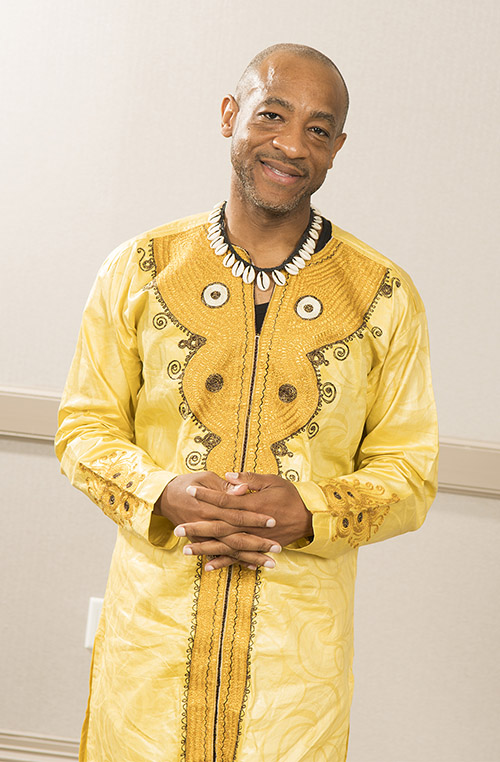Meet our new Horning Chair for Diversity, Equity, Access, and Inclusion, Dr. Yuma I. Tomes. Dr. Tomes bring 20 years of experience to the museum as a leader in community outreach and multicultural initiatives in academia and educational psychology. Here, he shares what brought him to the Phillips and his vision for the museum.

Dr. Yuma Tomes
Why did you want to be CDO at The Phillips Collection?
After spending 20 years in academia and desiring to do more in the areas of diversity and inclusion, I felt a new season was necessary. While I have limited background working with museums, the tenets of the position are directly aligned with my aspirations of creating brave, inclusive spaces for learning and growth. Providing thought leadership in conceptualizing and shaping a center for learning and practice around creativity, empathy, equity, and resilience was appealing. Additionally, the opportunity to build and cultivate external relationships allows The Phillips Collection to become more accessible to diverse audiences. Finally, and possibly most importantly, The Phillips Collection has been “seeing differently” for a century. This mindset promotes an inclusive environment of acceptance and redefining traditional museum practices.
How will your background in academia and as a psychologist inform your work at the Phillips?
Diversity transcends professions by embracing universal principles. In my experiences as a psychologist and university faculty member [at Sam Houston State University and the Philadelphia College of Osteopathic Medicine], I worked in diversity-rich environments and established numerous equity-based activities that will assist the Phillips’s DEAI work. More specifically, creating multicultural learning modules, developing cultural-conscious training, and increasing cross-cultural communication are of particular interest at The Phillips Collection. Additionally, I think my previous experiences help to bridge arts and academia. While most universities have arts programs, the ability to take the museum to the university in different fields (e.g., psychology, social work, etc.) highlights a unique approach to learning.
What is your priority as the CDO at The Phillips Collection?
I want to build on the success The Phillips Collection has embarked on in DEAI work. Given the intersection of the pandemic and social/racial unrest in the United States, most professional entities have engaged in DEAI work. However, The Phillips Collection has been a leader in this area by being among the first museums to create a Chief Diversity Office position. Priorities include but are not limited to: establishing effective diversity trainings, creating a monthly DEAI newsletter, creating Phillips-in-the-community events, and promoting art and mental well-being. Hopefully these initiatives will establish safe spaces that champion fairness and anti-oppression, positioning The Phillips Collection as a museum of artistic expression, community health, and well-being for the region and throughout the country.
In 2020, museums across the country issued statements in support of the Black Lives Matter movement and declared their commitment to DEAI. How have you seen the cultural sector respond since then and how will cultural institutions continue to evolve in their DEAI work?
The ground-swell from cultural institutions across the country has been palpable. In 2020, museums were in a unique position to not only chronicle the movement through different art forms, but they were critical to host community meetings and dialogues to promote healing. As a result, museums will continue to shepherd DEAI work through exhibitions, conversations, and community learning opportunities. Museums attract people from different perspectives. These intersecting moments highlight learning opportunities and make community members feel seen and valued.
The Phillips Collection has just celebrated its centennial. What changes do you hope The Phillips Collection makes in the DEAI space over its next century?
I hope The Phillips Collection continues to lead in DEAI and become an institution of inspiration. Museums, like The Phillips Collection, can create learning experiences that advance critical thinking while valuing equity and diversity. This could include a myriad of ideas ranging from an exhibition of art by artists of various backgrounds/abilities/sexual orientation to creating/establishing diversity trainings that are universal in all work environments. Further, The Phillips Collection can be a museum of cultural consciousness advancing the pursuit of equity and accessibility for all. The museum can generate a discourse that can disrupt dominant social narratives that have historically supported hegemonic beliefs. Hopefully, every person entering The Phillips Collection will see themselves reflected through the art, hear their stories through oral traditions/history, and feel they belong to an institution that honors their intersectionality.
